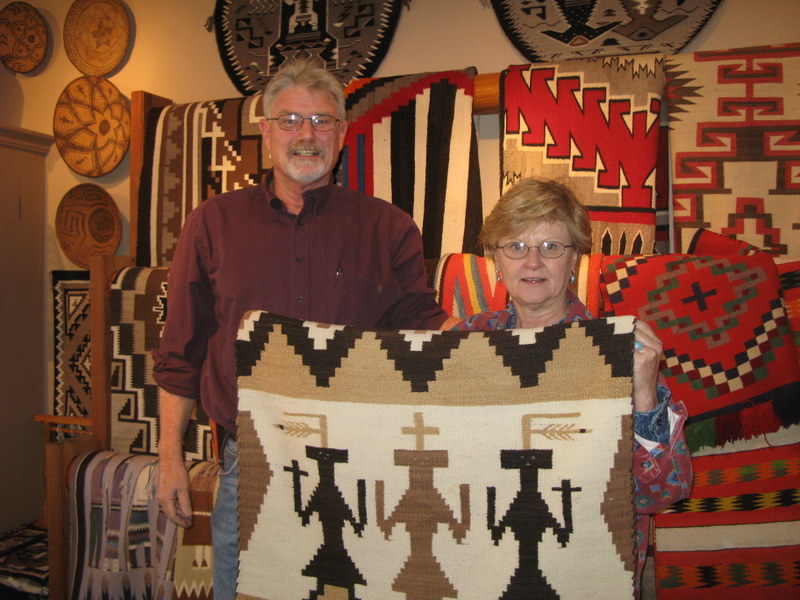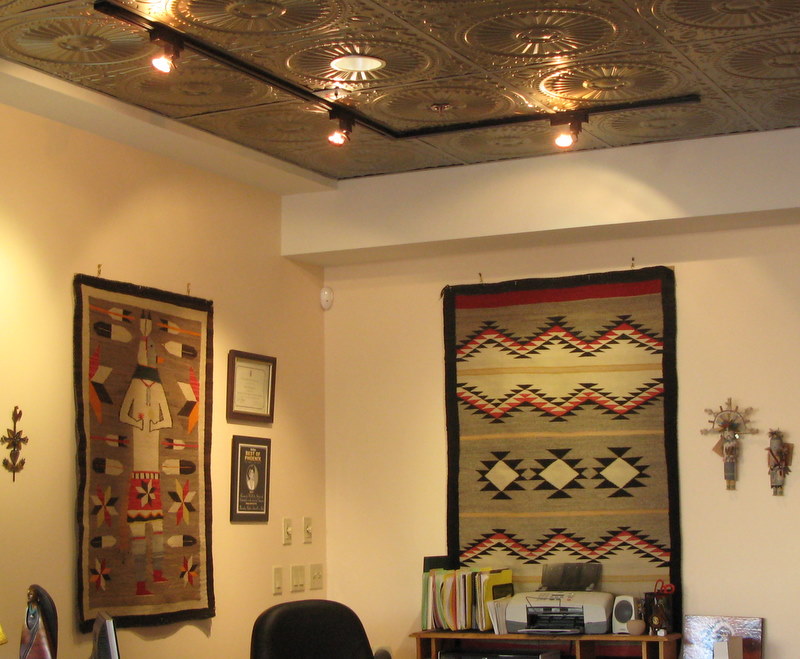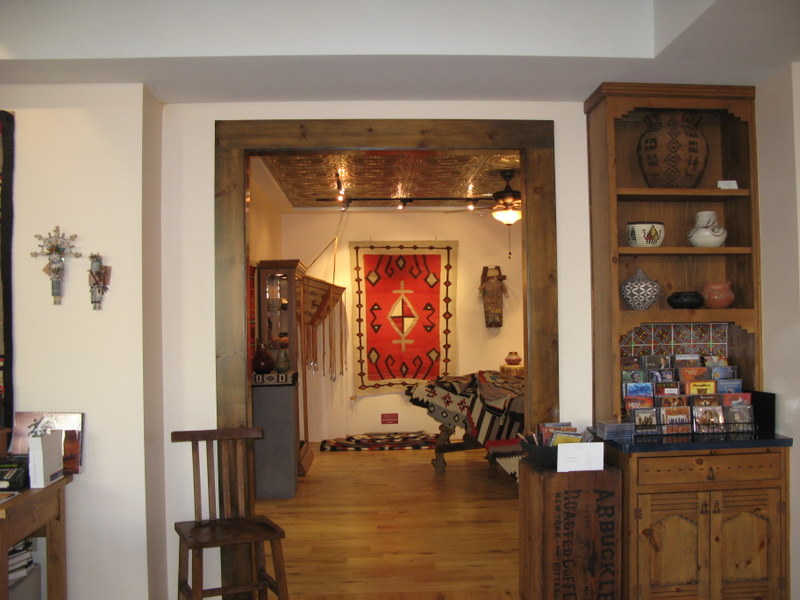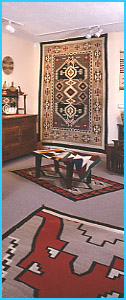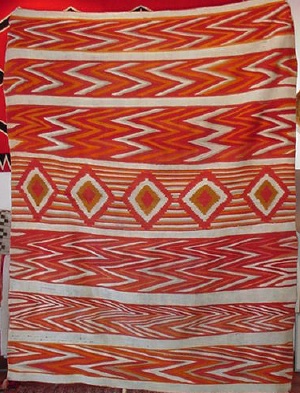Weaving Appreciation Walk in Scottsdale
Why do we seem to ignore the resources that are close to home? Well, I’m busy and I have a business to run plus um, ah aren’t most of the Native American galleries in Scottsdale dealing mostly in jewelry? I was shaken out of my ignorance last year while I was helping a friend try to track down some rugs that had been stolen. Since I live in the Phoenix area, I covered the galleries in Scottsdale (in the afternoons, in August, but that’s another story). I hadn’t been in any of them for years, and I was shocked. Every single gallery had some wonderful textiles, the gallery owner or manager was glad to talk about the textiles and they were very willing to have a small group of weaving enthusiasts drop by. I organized a class through the Fiber Factory in Mesa, and we did our first gallery walk last Saturday. It won’t be the last one I can tell you that.
Our first stop was at the Old Territorial Shop 7077 E. Main St. #1, Scottsdale, 480-945-5432, a wonderful store filled with both vintage and contemporary weaving. The owners, Alston and Deborah Neal, trade with Mark Winter at Toadlena and they have what is arguably the best selection of fine Two Grey Hills weavings in the Phoenix area. If you interested in Navajo weaving and haven’t ever seen a tapestry grade Two Grey Hills, you owe yourself a stop here. We also looked at some wonderful vintage pieces, some dyed with indigo. Old Territorial Shop also carries a nice selection of pottery, basketry and jewelry. Alston and Deborah are knowledgeable in everything they carry and really enjoy visiting with their customers.
Next, we took the short walk to the River Trading Post, 7033 E. Main St., 102 (480-444-0001). Some people get excited about sports cars, some people get excited about big screen TV, but I get excited about rare rugs. When I walked into the River, there were two rugs that immediately grabbed my attention. First, there was an early Ye’i of about 1915 vintage. It reminded me of another rug that I wrote about in an earlier post. It’s the one on the left in the picture below.
The River has two examples of this style in their current inventory. I wonder if they’re by the same weaver or weavers who were related to one another. That would be an interesting textile analysis. Has anyone developed a framework of points of comparison that would help determine that? I’ll have to look into that….. The second weaving that I couldn’t take my eyes off at the River was a J.B. Moore catalog rug. It’s a version of Plate XXIV of Moore’s 1911 catalog, The Navajo. Moore, along with C.N. Cotton and Juan Lorenzo Hubbell was largely responsible for the development of Navajo weaving as a floor covering. The River has a wonderful display space that really shows the textiles off as you can see in the picture below. That’s the J.B. Moore rug that you can see framed in the doorway.
From the River Trading Post, it’s another short walk down the street to Turkey Mountain Traders at 7008 East Main St in Scottsdale (480-423-8777). Turkey Mountain concentrates on vintage textiles, and we were able to examine a fine and striking Teec Nos Pos Sunday Saddle Blanket dating back to the early 1900’s. By this time, we were pretty parched and Turkey Mountain’s manager kindly offered us some mugs of cold water and the comfort of chairs for a little more rug discussion. They also have a nice space devoted mainly to textiles and were very gracious about sharing their knowlege with us. A picture of the Turkey Mountain textile display is below (photo courtesy of Turkey Mountain Traders).
It was past four in the afternoon when we headed for last stop, John C. Hill Indian Antique Indian Art, 6962 E. 1st Ave, #104, 480-946-2910. As the gallery name implies this is another business which deals in vintage rather than contemporary work. The big attraction here was a spectacular wedge weave probably woven in the 1890’s. The wedge weave technique, which purposely distorts the angle of the warp threads by weaving on the bias, fell out of favor when rugs were introduced. Wedge woven pieces produce a scalloped edge that isn’t the best for a floor covering, and the weave can also produce surface ripples. The technique is still used today, but very seldom in Navajo weaving. Here’s a picture of the blanket, courtesy of John C. Hill.
We’ll be doing another gallery walk in early 2009, possibly in connection with a weaving demonstration at one of the galleries. Please come along if you’re in town and do stop by these galleries if you’re in Scottsdale!
Mary Walker
